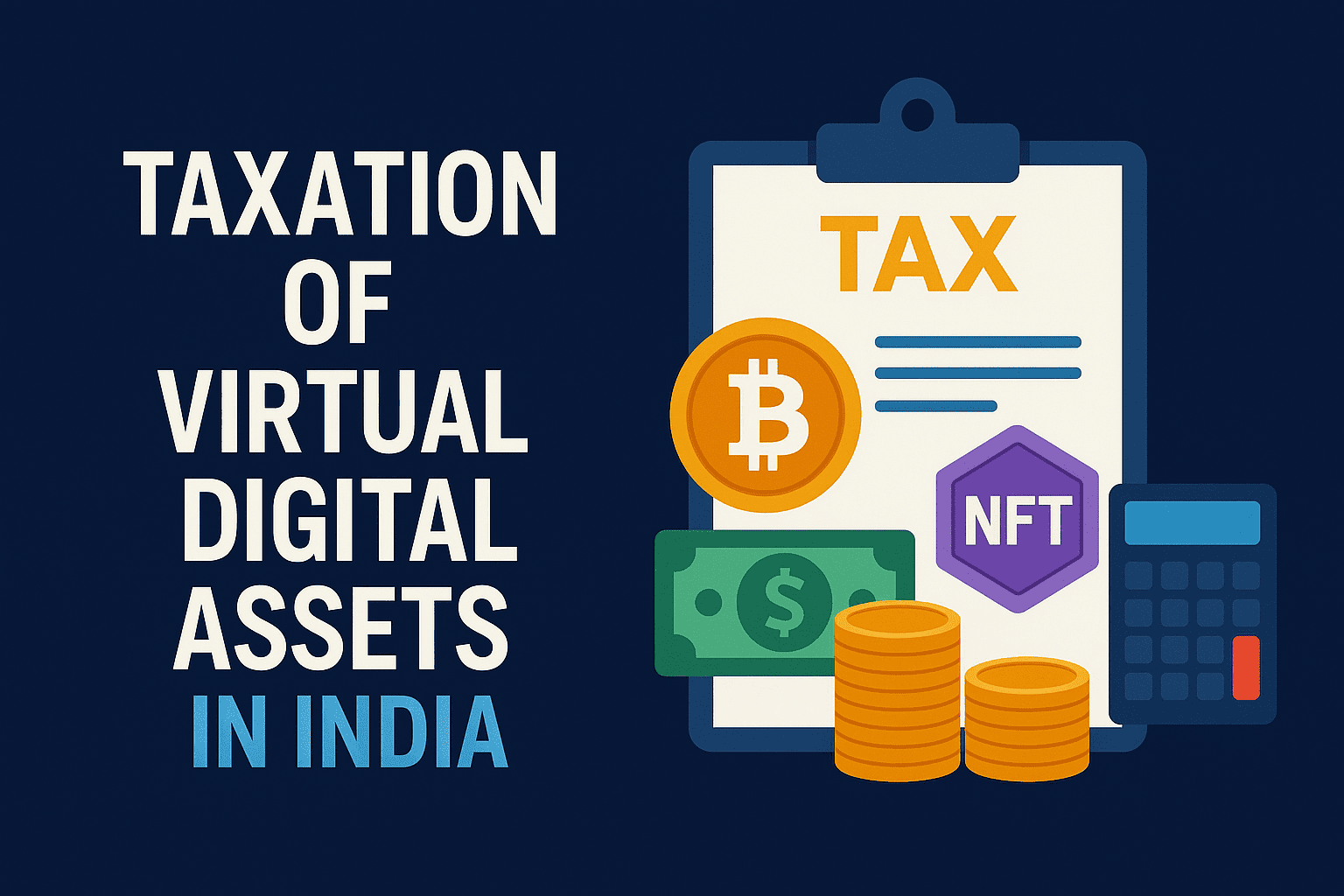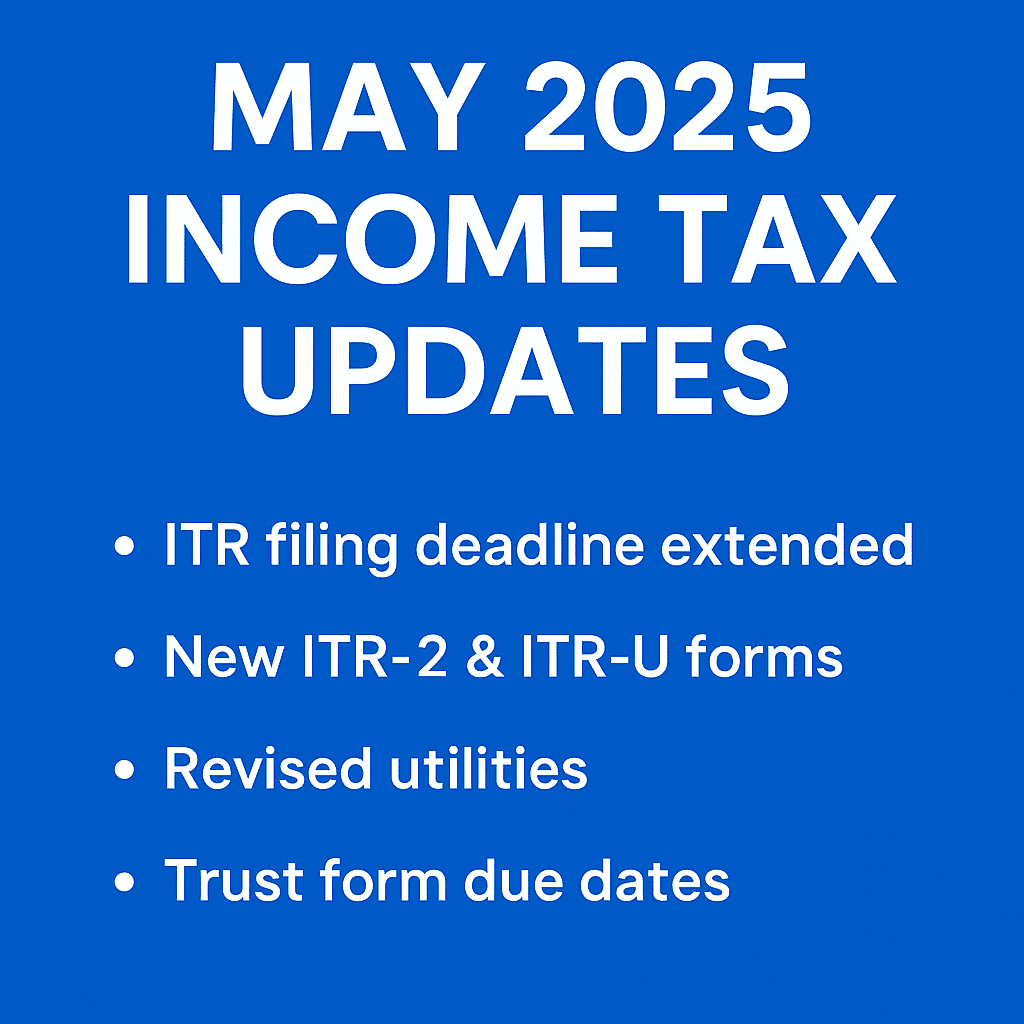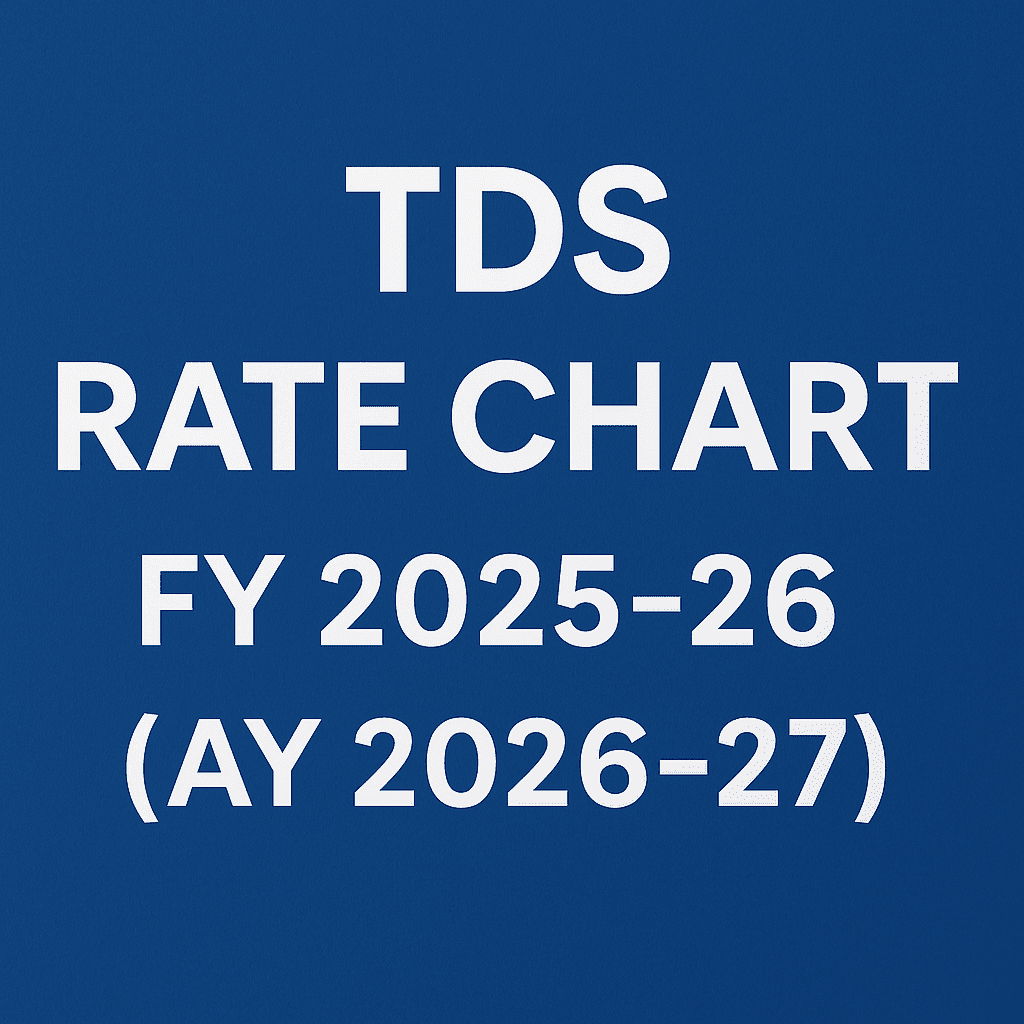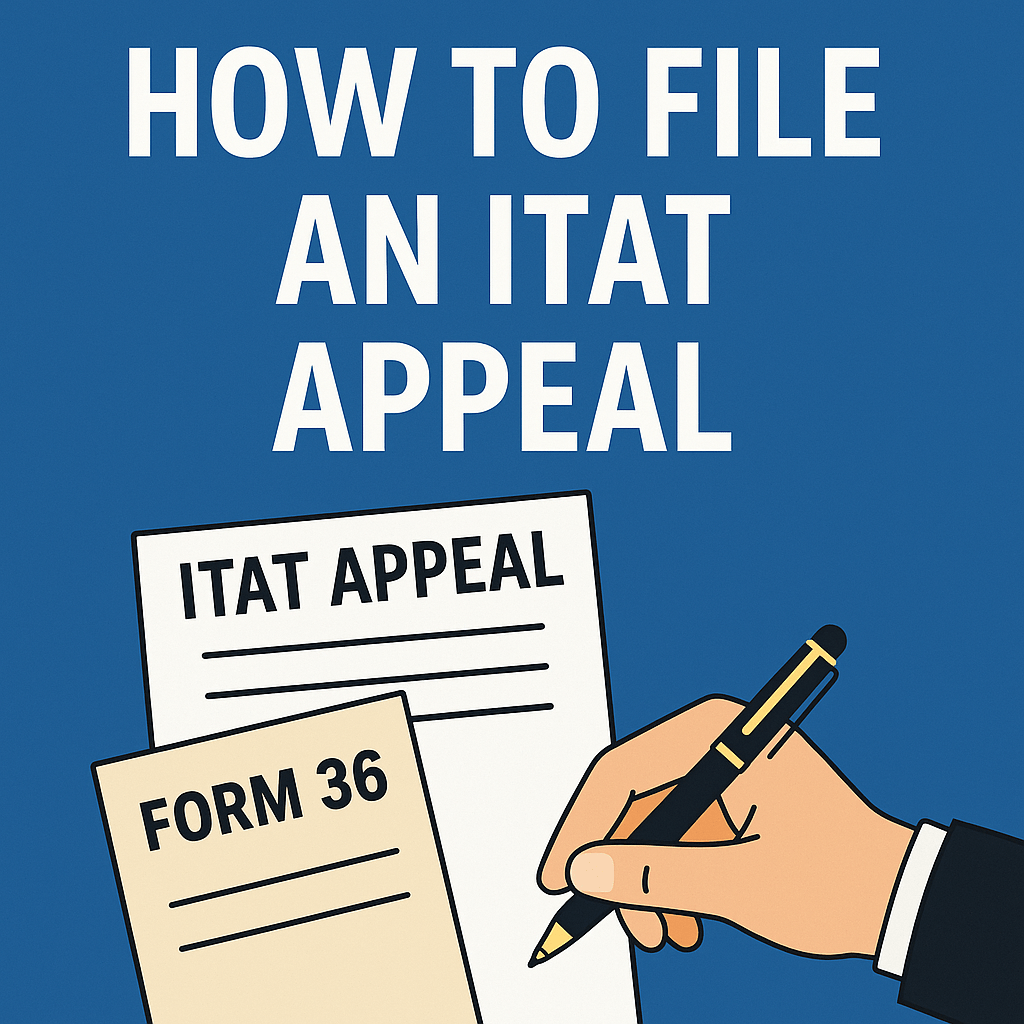📢 Taxation of Virtual Digital Assets (VDA) in India – A Complete Guide (Updated for FY 2024–25)
🔍 What is a Virtual Digital Asset (VDA)?
A Virtual Digital Asset (VDA) includes any information, code, number, or token (not being Indian or foreign currency), generated through cryptographic means and can be transferred, stored, or traded electronically.
- Cryptocurrencies (e.g., Bitcoin, Ethereum, Solana)
- Non-Fungible Tokens (NFTs)
- Other notified digital tokens
📜 Legal Framework Governing VDA Taxation
| Provision | Applicability |
|---|---|
| Section 115BBH | Tax on transfer of VDAs |
| Section 194S | TDS on transfer of VDAs |
| Section 2(47A) | Definition of Virtual Digital Asset |
| Section 56(2)(x) | Taxability of VDA gifts |
💰 Tax on VDA Gains – Section 115BBH
Effective from 1st April 2022, income from transfer of VDAs is taxed at a flat rate of 30%.
🔎 Key Features:
- Tax Rate: Flat 30% on gains (plus surcharge and cess)
- Deduction: Only cost of acquisition allowed
- No Set-off: VDA losses cannot be set off against any other income
- No Carry Forward: VDA losses cannot be carried forward
- Applicability: Residents and Non-residents
- Holding Period: Irrelevant (short-term or long-term is treated the same)
🧾 Illustration:
You bought Bitcoin for ₹60,000 and sold it for ₹1,00,000.
- Gain = ₹40,000
- Tax = ₹12,000 (30% of ₹40,000)
- No deduction or exemption allowed
🔁 TDS on VDAs – Section 194S (Effective 01.07.2022)
🧾 TDS Summary:
- Rate: 1% on consideration
- Threshold: ₹10,000 per year (₹50,000 for individuals/HUFs not subject to tax audit)
- When: At time of credit or payment, whichever is earlier
- No PAN: 5% under Section 206AA
- TDS Returns: File Form 26Q quarterly
🎁 Gifts of VDAs – Section 56(2)(x)
- If received as a gift without consideration exceeding ₹50,000 – taxable in recipient’s hands.
- Exemptions:
- Received from relatives
- On occasion of marriage
- Under will/inheritance
📄 ITR Reporting Requirements (AY 2025–26)
| ITR Form | Requirement |
|---|---|
| ITR-1 | Not allowed if VDA income is earned |
| ITR-2 / ITR-3 | Separate “Schedule – VDA” section provided |
| Details Needed | Acquisition Date, Sale Date, Cost, Sale Value, TDS |
🛠️ Best Practices for CAs and Investors
- Maintain a ledger for each crypto asset
- Track buy and sell dates clearly
- Reconcile with Form 26AS
- File Form 26Q if buyer of crypto
- Use VDA Schedule in ITR, not Capital Gains
⚖️ Penalties for Non-Compliance
| Non-Compliance | Penalty |
|---|---|
| Failing to deduct TDS | 30% tax + interest + penalty under Section 271C |
| Under-reporting income | 50% to 200% penalty under Section 270A |
| Late ITR Filing | ₹5,000 under 234F (₹1,000 for income < ₹5L) |
📌 Conclusion
The taxation of Virtual Digital Assets in India is strict, clear, and isolated from traditional capital gains or business income rules. The flat tax rate, no deductions, and mandatory TDS compliance highlight the Government's intention to control this emerging financial frontier.
✍️ Need Help?
We assist with:
- VDA Tax Calculation Sheets
- TDS Filing and Reconciliation (Form 26Q)
- Crypto Tax Compliance Automation
- Accounting & Crypto Valuation Reports




 Urukundu
Urukundu
